Sensors already equip a range of tools to enhance monitoring capacity for conservation. Some of the higher bandwidth technologies, like camera traps and acoustic monitoring systems, have been essential elements of the conservation toolkit for decades, and thus have enough users that we've created dedicated WILDLABS groups to address them. But a whole range of lower bandwidth sensors beyond these core technologies are being increasingly integrated into conservation monitoring systems, and offer rich new insights into the wildlife and ecosystems we're all working to protect. As with many technologies, cost and access have historically been challenges to the adoption of new sensors, but with low-cost and open-source solutions on the rise, we're excited to see what the future of this space holds.
Getting Started with Sensors:
- Watch Shah Selbe's Tech Tutors episode on scaling FieldKit, an open-source conservation sensor toolbox, from a project to a successful conservation tech product.
- Check out our Virtual Meetup about Low-Cost, Open-Source Solutions in conservation tech, including a talk by Alasdair Davies on the Arribada Initiative's work with thermal sensors in early warning systems.
- For a more in-depth introduction, watch the first video in our datalogger mini-series: Freaklabs: How do I get started with Arduino?
In this group, you'll meet others who are using and innovating diverse sensors in their work, discuss ways to make sensors more effective & accessible for conservationists, learn about what sensors are already helping us accomplish in the field, and have the opportunity to ask and answer questions. Join this group to get started!
Header image: Emma Vogel, University of Tromsø
- @VijayKarthick
- | He/Him
Nature Conservation Foundation
I'm a PhD student from India, interested in utilising bioacoustics and technology to answer ecological questions. I'm a frog nerd :)

- 0 Resources
- 2 Discussions
- 9 Groups
- @rowan
- | they / them
Octophin Digital
Jack of all Trades. I've been a zoo keeper, a conservation geneticist and a web developer who specialises in conservation projects and orgs.


- 1 Resources
- 5 Discussions
- 15 Groups
Technologist and Visual storyteller focusing on social, conservations issues.



- 1 Resources
- 42 Discussions
- 17 Groups
- @Valentin_Stefan
- | He/Him
Interested in emerging technologies related to camera traps for pollinators
- 0 Resources
- 4 Discussions
- 18 Groups
Interested in bioacoustics
- 0 Resources
- 0 Discussions
- 14 Groups
- @MandyEyrich
- | She/Her
University of Florida (UF)
Bridging industries with 15+ years of cross-sector expertise specializing in user-centric technology and product strategy, UX research, UX/UI design, process optimization, and end-to-end agile product development moving from ideation to iteration.
- 0 Resources
- 0 Discussions
- 27 Groups
- 0 Resources
- 6 Discussions
- 4 Groups
- @jmondragon
- | He/Him
- 0 Resources
- 1 Discussions
- 6 Groups
I am a biology undergraduate student who is interested in the field of wildlife conservation and has skills in field observation and identification
- 0 Resources
- 0 Discussions
- 12 Groups
- 0 Resources
- 0 Discussions
- 6 Groups
- 0 Resources
- 5 Discussions
- 8 Groups
Department of Conservation (New Zealand)
I work with the Terrestrial Biodiversity Team at the Department of Conservation, New Zealand. I'm interested in machine learning and spatial data science.
wekaResearch.com | doc.govt.nz

- 0 Resources
- 9 Discussions
- 4 Groups
In this article, Swarm Technologies give a detailed analysis of the tradeoffs between the most common IoT connectivity solutions to improving food production, combating climate change, optimizing supply chains and many...
19 November 2021
GroupGets has a Group buy campaign for a μMoth v1.1(Round 2), that runs till Sat, 06 Nov 2021 12:55:00 PDT. The μMoth v1.1 goes for a Single-unit price of $99.99 + shipping.To join this buy, kindly visit this page
4 November 2021
In their three-part interview from our new series Technical Difficulties, Colby Loucks and Eric Becker share the failures they've encountered and learned from throughout six years of working on the WWF-US Wildlife Crime...
27 October 2021
This article explores the use of IoT and Machine Learning Technologies in Ewaso Nyiro River, Kenya - which serves several communities as well as wildlife in Olpejeta Conservancy and Lewa Conservancy, among others. Data...
21 October 2021
In their three-part interview from our new series Technical Difficulties, Colby Loucks and Eric Becker share the failures they've encountered and learned from throughout six years of working on the WWF-US Wildlife Crime...
20 October 2021
In his contribution to the Technical Difficulties Editorial Series, Internet of Elephants founder Gautam Shah shares the lessons learned from challenges throughout his unique career path as an entrepreneur working and...
14 October 2021
In their three-part interview from our new series Technical Difficulties, Colby Loucks and Eric Becker share the failures they've encountered and learned from throughout six years of working on the WWF-US Wildlife Crime...
13 October 2021
In this limited content series from Ashley Rosen, you'll explore best practices for designing enclosures for communication network equipment, and learn how airflow and temperatures inform effective enclosure design....
24 September 2021
Article
The new μMoth is now available on GroupGets! These units are going quickly, so join the order quickly to be among the first to try the world's smallest full-spectrum acoustic development board! Join the GroupGets order...
27 May 2021
The Conservation Technology Award is now seeking applicants! This award will provide two grants, each in the amount of $15,000 USD, to organizations that are deploying technology to advance their work in conservation....
4 May 2021
In this article, WWF's Whitney Kent discusses how radio collaring carnivores like lions and African wild dogs helps prevent human-wildlife conflict by acting as warning devices for communities and monitoring species'...
28 April 2021
Margo Supplies is excited to introduce the WILDLABS community to the Margo Gadfly, a new tool tested for its ability to prevent human-wildlife conflict! Read about how this hardware works, and how it protected...
31 March 2021
September 2024
16 Products
Recently updated products
117 Products
1 R&D Projects
81 Organisations
Recently updated products
Recently updated R&D Projects
Recently updated organisations
| Description | Activity | Replies | Groups | Updated |
|---|---|---|---|---|
| Sounds great! |
|
Sensors | 6 years 1 month ago | |
| We've also put together a variation on the wireless datalogger. We've found it extremely useful for us in other projects, especially in developing countries without... |
|
Sensors | 6 years 1 month ago | |
| FYI: we included instructions in English: https://github.com/SensingClues/OpenEars |
|
Sensors | 6 years 1 month ago | |
| FYI, the open source camera trap part of this thread has moved here: https://www.wildlabs.net/community/thread/694 |
|
Sensors | 6 years 1 month ago | |
| The talk is really interesting and I agree that it's important to think about the bigger issues of the world and then use technology as just one of the tools to try and tackle... |
|
Sensors | 6 years 2 months ago | |
| Hi everyone. Excited to be part of this group especially since IoT can pretty much trace it's roots to wildlife monitoring. I've... |
|
Sensors | 6 years 2 months ago | |
| Will your startup be involved in sensor networks for conservation? I'm very interested. Currently we create sensor networks for developmental infrastructure and agriculture... |
|
Sensors | 6 years 2 months ago | |
| Hi everyone. I'm Akiba and I'm an engineer by trade specializing in wireless sensor networks and communications. I generally work with groups like World Bank on... |
|
Sensors | 6 years 2 months ago | |
| Subcutaneous pittags that also read temperature (frustratingly) read only a limited range of temperatures - however, I hear that can be... |
|
Sensors | 6 years 3 months ago | |
| Hi Ted, This is all very interesting. The solution you describe seems eminently doable and in fact quite cheap. So doable and cheap that it may behoove one to... |
|
Sensors | 6 years 3 months ago | |
| Yes, I agree it's a tough problem - i'm certainly stumped ;) but thanks so much for your reply and counter question - the goal is to find these gillnets and... |
|
Sensors | 6 years 5 months ago | |
| Hi Tony, I'm leading a cross disciplinary group of researchers at Deakin University in Australia to build new technology for monitoring wildlife and engage citizen scientists... |
|
Sensors | 7 years 1 month ago |
ICOTEQ launch TAGRANGER® system of products
23 November 2023 1:25pm
AWMS Conference 2023
Insight; a secure online platform designed for sharing experiences of conservation tool use.
7 November 2023 1:01pm
Digital Signals Processing - free online textbook
31 October 2023 1:50pm
Project Update: Improving satellite ear tag transmitters for Polar Bears
6 October 2023 1:42pm
13 October 2023 10:57am
Hey Rob! I also missed this variety hour thinking it was the next day. I enjoyed the recording on youtube though!
Your thoughts on distributing the components to both sides of the ear is interesting. One thing to consider is heat dessipation, I believe. I believe it is important to consider how heat conducting the part going through the ear is. A few cables would perhaps be OK. Ruggedness should have a very high priority and the more compact the device is the better, I would think.
Interesting stuff you shared about the antenna!
Cheers,
Lars
20 October 2023 3:00pm
Cheers @Lars_Holst_Hansen , yes, the antenna foam spacer idea certainly helped us a bit. I completely agree though that ruggedness, especially on a polar bear (a bit different from a koala 'bear') is a top priority, so there's a lot to consider.
Rob
Song Meter Micro experience?
27 October 2022 6:33pm
11 May 2023 4:45pm
Hi Lucy,
Sorry! I was in the field by the time you replied, and have not been back long. I realise it's been months now, but are you still planning on using the SM Micros? If so, please have a look at my thoughts in the new comment on this thread. I would think in Norway, the stridulating insect issue would not be as bad as in the tropics. Depends on what you want to use them for. Battery life is still definitely an issue though, and even more so in low temperatures. Good luck, let me know how you get on, or if you went with a different recorder.
Cheers,
Nick
26 September 2023 5:55am
Hi everyone. I am suuuuuper late on this discussion but I just finished 6-month fieldwork deploying 18 SM Micro over 70 different locations in Java, so I thought I would like to share my opinion on this device. So my work is basically installing each recorder in one location for the duration of 7-14 days before moving it to a different location, with battery and silica gel changed in between every deployment. Here's my thought:
Waterproofing - The first 2 months of the fieldwork was the wettest season I have ever experienced in the field. Extreme rain almost on a daily basis. Most of the time the recorder was working just fine except for the 2nd week of deployment when I found the inside a bit wet, but it was probably because I forgot to ensure that both lids were clicking. The recorder still works fine after this deployment, and this was when I decided to change the silica gel before the next deployment.
Sound quality - As mentioned by others. there's an annoying peak at 6kHz. I did not originally plan to do soundscape analysis so it wasn't a big problem at the beginning, but now there is some discussion on doing so. Other than this I found the quality to be just adequate.
Battery Life - I am using alkaline 1,5 volt (non-rechargable) battery and get ~120 hours of recording, with a sample rate of 32khz. Suitable for my method, but certainly not for longer deployment.
Safety - My field site is full of a poacher who does not like to be detected, and the rangers warned me so many times about the camera trap that was destroyed or stolen by these people. I used steel cable and a small carabiner-style padlock which I later realized wouldn't stand a chance against a few hits of the machete, but luckily no recorder went missing--mostly because I tried to hide it as far as possible from the trails and cover our tracks. The small size of SM Micro makes it easy to hide among foliage (be careful on contact noise between leaves and recording), and the fact that it is colored green and has no external light also greatly helps (unlike Swiftone. Seriously, who thought that white is a perfect color for an expensive device that will be left in the forest for a long time?)
In conclusion, it is a cheap and easy-to-get device (compared to the mythical Audiomoth) for species presence detection in a short time like I did, but certainly not for longer deployment or more intricate bioacoustic analysis.
6 October 2023 9:08pm
Hi everyone,
I wanted to provide an update on behalf of Wildlife Acoustics regarding some of these comments in this thread. As some of you may know, we have just announced the second generation of our Song Meter Micro. Along with 33% longer battery life due to an expanded battery tray (which now holds 4 AAs instead of 3), the Song Meter Micro 2 will also have a flatter frequency response. Though we don’t have a firm release date at the moment, we are currently looking at an early 2024 release, with pre-orders likely to start at the end of 2023. Detailed frequency response charts and specs will also be posted to our site soon. In fact, we have built an anechoic chamber in our new office and will be doing detailed testing with a host of new precision instruments. For more info on the Micro 2, check out our current product page. Lastly, thanks all for your open and honest feedback. It allows us to make our products better and better for you.
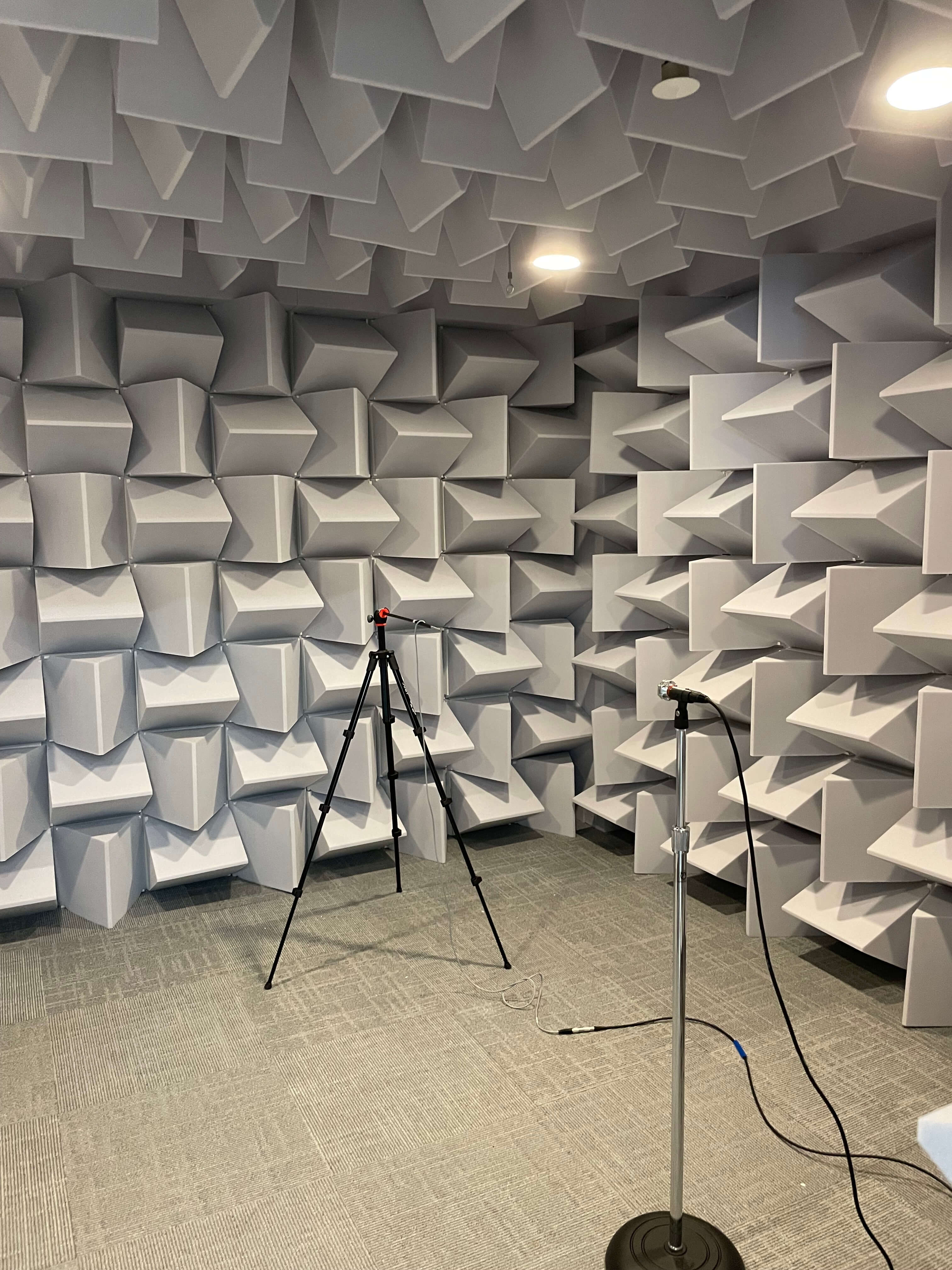
Unravelling freshwater turtle activity with an open source, low-cost accelerometer
6 October 2023 1:04pm
1st Wildlife Scientific Conference 2023
25 September 2023 11:10am
Best Temperature/ Humidity Dataloggers
24 April 2023 1:30pm
11 September 2023 2:49pm
Heya Nick - ooh cool! We thought about the Kestrels but I had heard about some of the problems with them maxing out at 100. Have gone for HOBO Pro V2s
11 September 2023 2:51pm
Heya Matthew cheers for providing a comparison! We went with HOBO Pro V2s which are more expensive but have been working well so far!
23 September 2023 6:14am
Makes sense if you have the cash...
*NEW* White Paper: Harnessing the Power of Sound & AI to track Global Biodiversity Framework (GBF) Targets
20 September 2023 12:53pm
Gundi: The Universal Adaptor for Conservation Technologies
13 September 2023 4:28pm
A low-cost, long-running, open-source stereo camera for tracking aquatic species and their behaviours
5 September 2023 12:15pm
Innovation in Environmental Monitoring
31 August 2023 11:31pm
Live Streaming from a Remote Location (no cell tower access)
15 July 2023 1:18am
29 July 2023 1:29am
"The WiFi Solar Camera comes loaded with various features such as live monitoring ( via smartphone app ), motion sensor recording and notification alerts on detected movement, night vision, cloud storage of footage, an audio system to facilitate communication"
WiFi Solar Camera | Wireless CCTV Home Security Systems
If you use the wifi solar camera with Cctv home security systems and that you have wifi then this is the cheapest option to use. Buy now
29 July 2023 8:43am
Hi Colin, Many thanks for your replies. Yes, Starlink provides full internet access. Our current Wifi Nest camera contains a web server & provides a html code to embed the live stream into a web page for public access. Most security cameras, due to privacy reasons, do not stream to a web page without requiring a username & password. Not a viable solution for public viewing.
We are looking for a camera with PTZ functionality that can stream to a web page without requiring a username & password.
Cheers, Graeme
11 August 2023 12:27pm
Graeme, Maybe speak to a web IT expert. You may be able to have an interface on the webpage which provides the login credentials to the camera, but then passes the image (and control) to another page. Make a "masking" page that keeps the camera happy, but access and control is via another page.
Human-Elephant Conflict Tech Solution in Tsavo: NdovuCare
 Esther Githinji
and 1 more
Esther Githinji
and 1 more
7 August 2023 1:36pm
30 April 2024 12:48am
9 May 2024 1:56pm
15 May 2024 9:34am
#Tech4Wildlife Photo Challenge: Community Choice Honorees
3 August 2023 10:00am
Live Streaming Camera
31 July 2023 11:36am
Senior Technical Specialist, Monitoring & Technology, ZSL
18 July 2023 1:44pm
Lion collars LoRaWan
24 May 2023 8:10am
17 July 2023 1:36pm
Thank you, looks very good.
Due to changes in export/import regulations, Vectronic is not shipping to Kenya anymore.
17 July 2023 1:38pm
Thank you for sharing. For cattle, we tested the LT-10 from Globalsat.
But will switch to collars, also for cattle.
17 July 2023 1:39pm
Thanks, Tim, will keep an eye on Smart Parks. Still the preferred solution from our side.
pneumatic artificial muscle applications in conservation tech?
5 July 2023 6:59pm
River Monitoring Sensors
6 June 2023 1:06pm
30 June 2023 7:05pm
Hi Kennedy, this is Ben from the USGS. There are many ways to monitor stream flow, but most are expensive and time-consuming. We have recently come up with an alternative that uses cameras and images combined with AI to estimate relative flow. There is a growing database here:
Feel free to get in touch if this seems like it could help, Ben at bletcher@usgs.gov
3 July 2023 4:05pm
Would you consider using LoRaWAN technology?
LoRaWAN features super low power consumption and ultra-long-range communication, very suitable for the wild :)
One LoRaWAN gateway can connect to up to 200 sensors within the range of 2km to 10km (depending on the environment and antenna etc.)
You can check out the combination of the following:
3 July 2023 6:18pm
Ben Letcher from the comment below will be able to provide much more in-depth info, but feel free to email me at eric.greenlee.96@gmail.com
Information Session: Technology Testing to Mitigate Human-Elephant Conflict in West Bengal
19 June 2023 11:07pm
Innovation wanted: Technology Testing to Mitigate Human-Elephant Conflict in West Bengal
19 June 2023 10:54pm
The Wildlife Society Conference
19 June 2023 5:59am
Wildlife Monitoring Engineer
8 June 2023 4:54pm
FieldKit: Accessible Sensor Technology for All
23 May 2023 10:26pm
How sensors in "Smart Eggs" are helping Condors
19 May 2023 12:30am
Introducing the 2023 Conservation Tech Showcase
11 May 2023 5:06pm
Looking for an off-the-shelf saltwater switch
6 May 2023 6:05am
Field testing of a radio telemetry system to be deployed in the sea.
24 January 2023 6:52am
21 March 2023 2:47am
Here's a link about waterproofing in the marine environment, if you haven't already discovered Ed Mallon.
21 March 2023 8:52am
Oh, great link! Been doing marine projects recently and a big headache is protecting submerged electronics. I've kind of heard of many of those techniques, but great to see them collected all in one place and with first hand experienced commentary regarding them.
12 April 2023 2:32pm
Not sure exactly how your telemetry will be deployed, but if it's going to be attached to an animal in a relatively non-invasive way, you might check with zoos or aquariums that have similar species.
I worked in that industry for a long time and we tested telemetry for seals, sea lions, polar bears and elephants. There might have been more, but that's all I can think of off the top of my head. This can help improve attachment methods and test how tough the animals will be on the equipment.







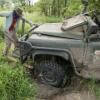
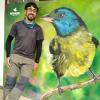




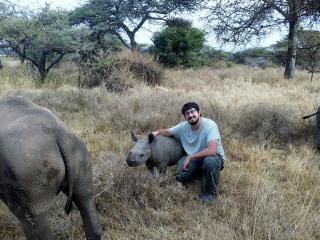






























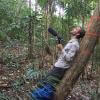



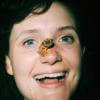



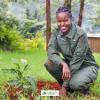










7 October 2023 3:45pm
Just when I thought I couldn't get any stupider Steph...at least I am improving at something I guess...